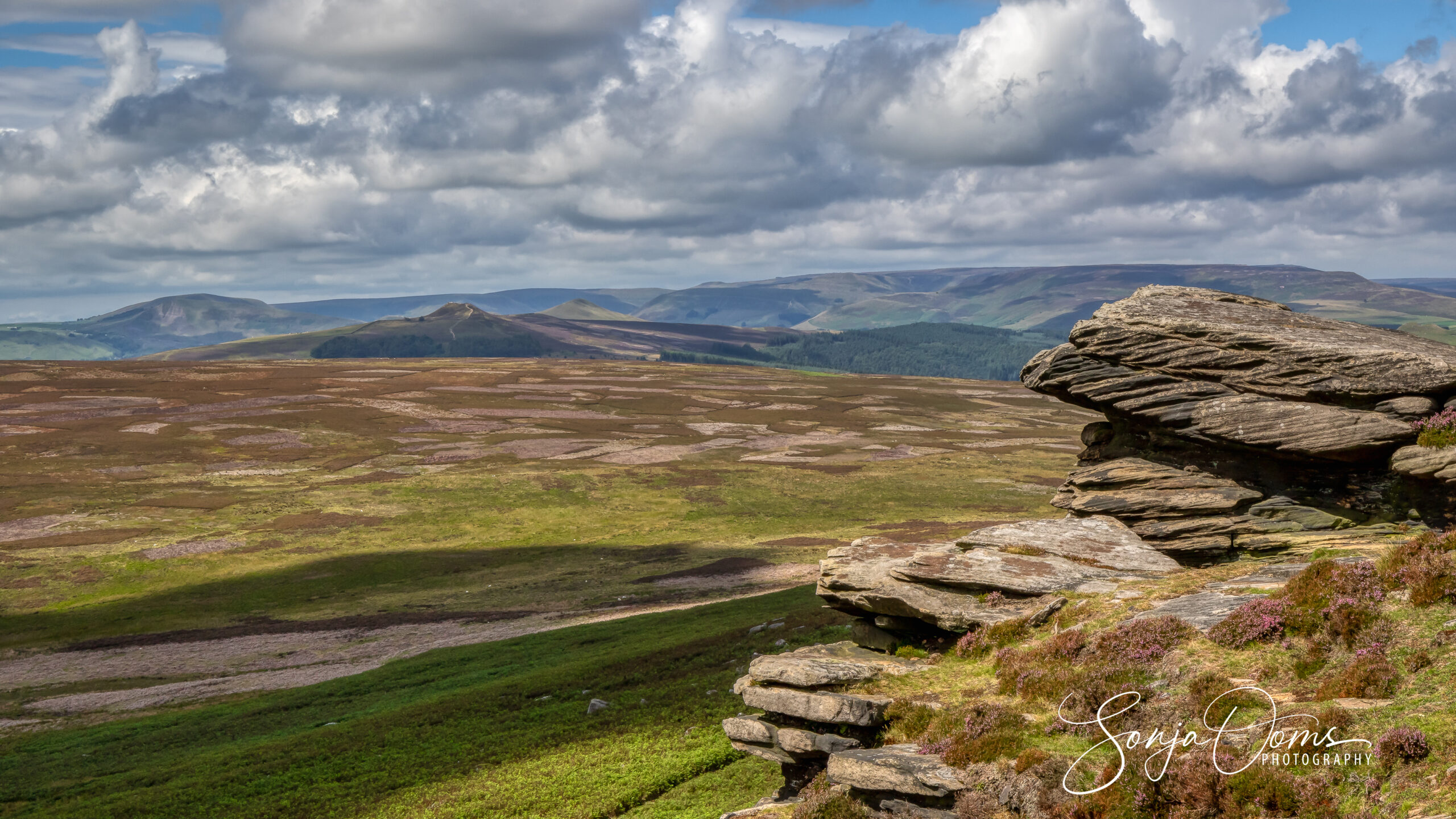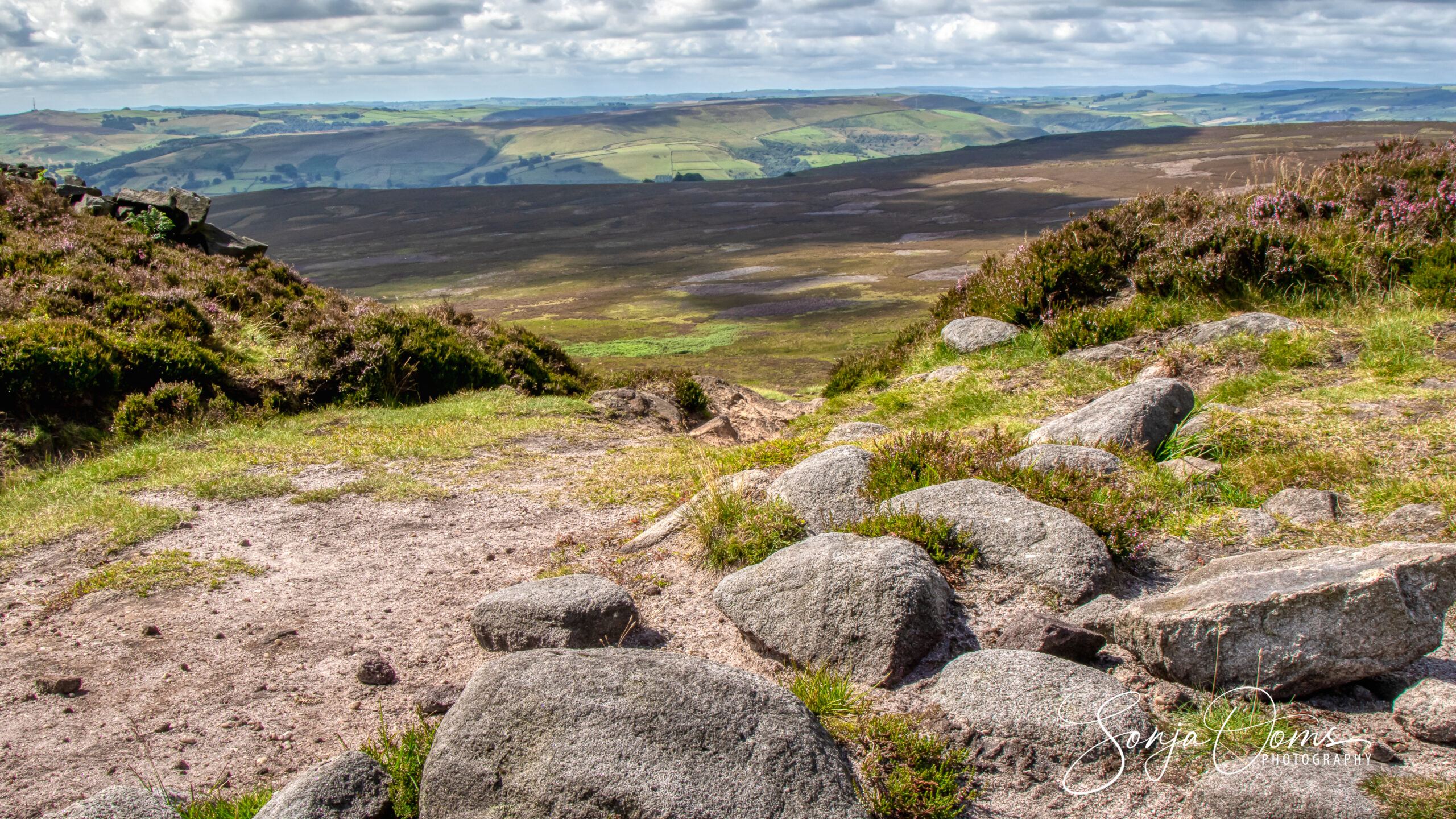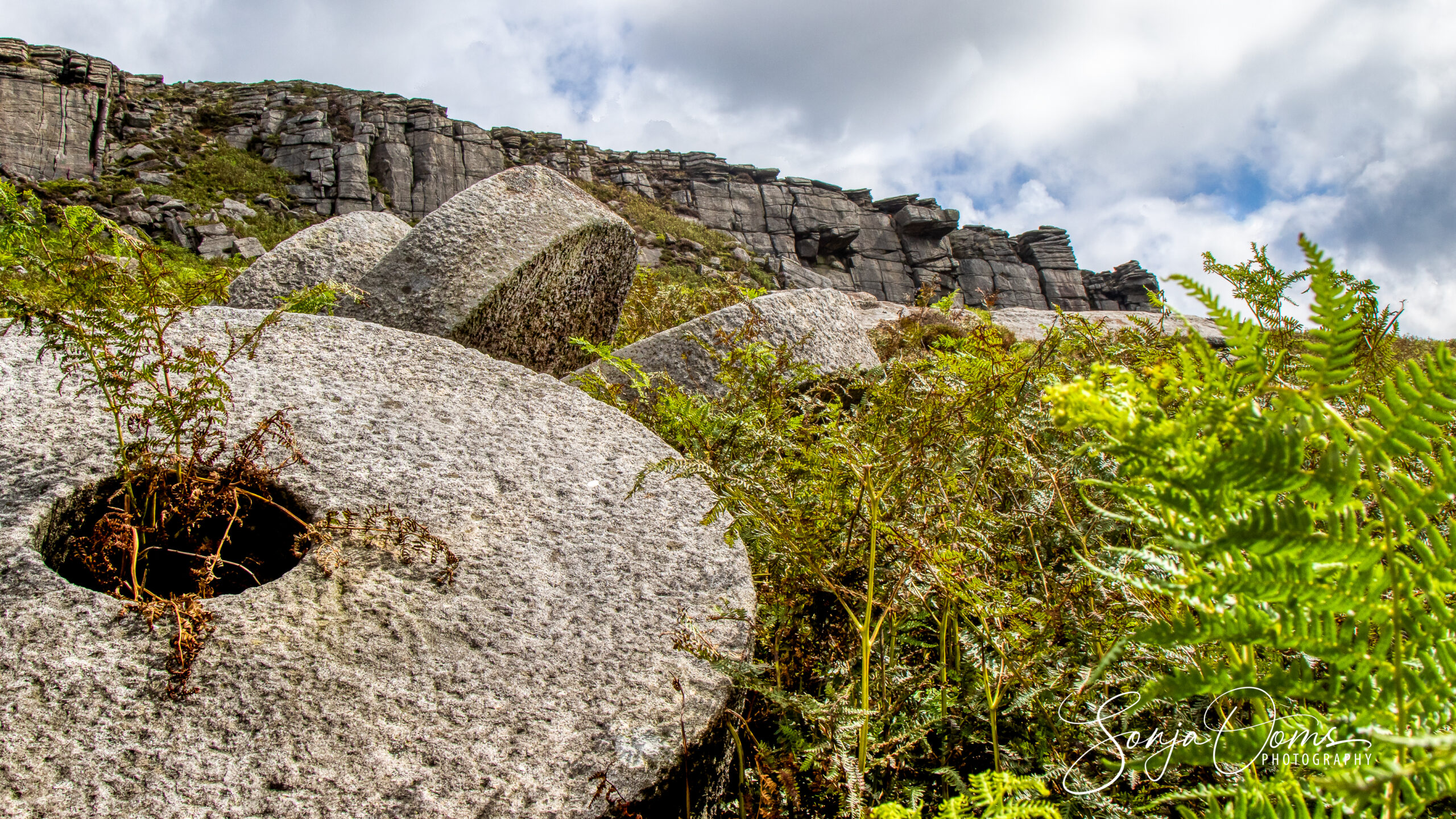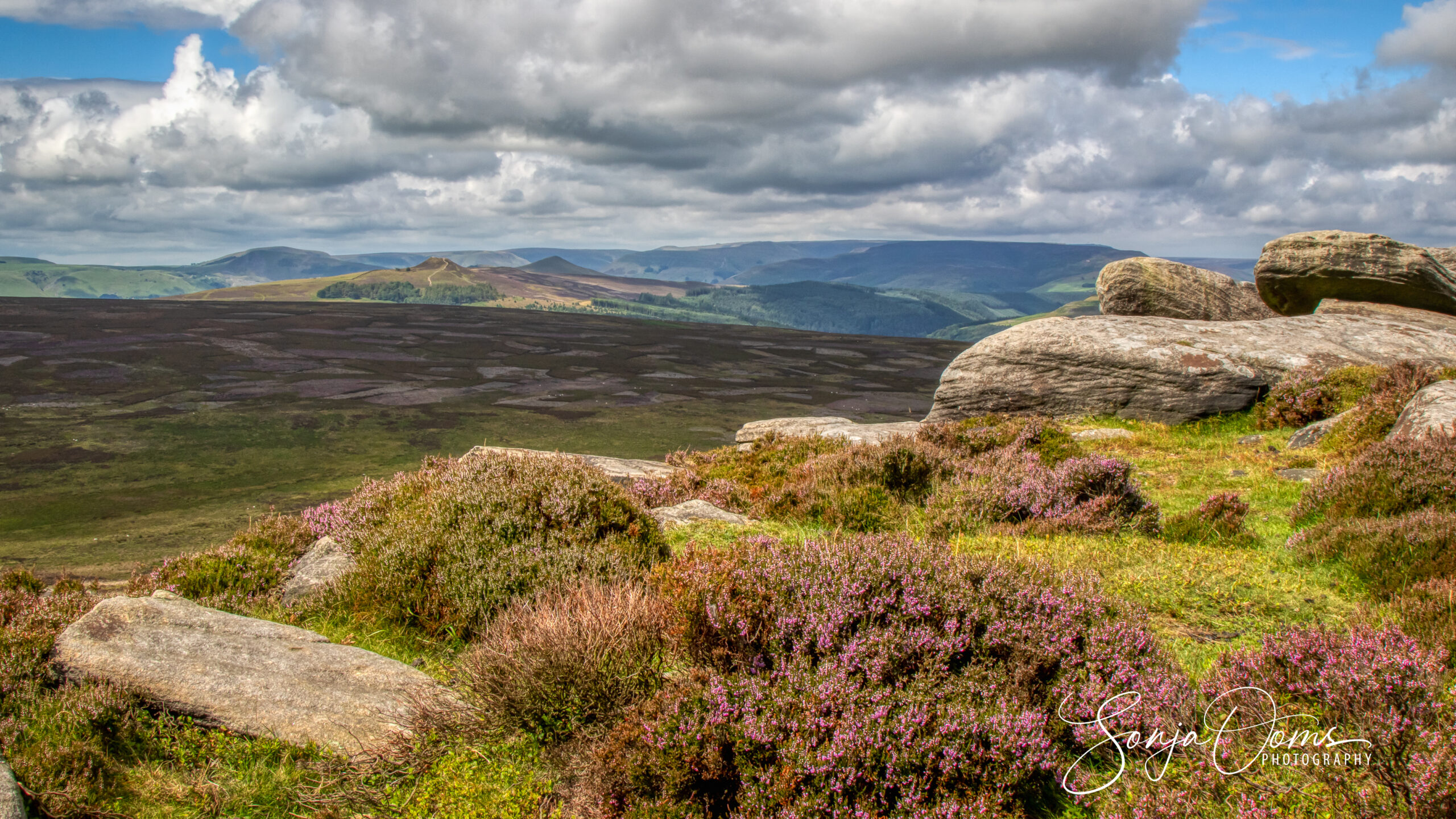Awesome views standing on top of the Edge and looking down into the dip…
Millions of years ago, the Peak District National Park (mostly in northern Derbyshire – UK) was actually situated down by the equator. Over millions of years, this area moved up North, rose out of the seabed and left the coral, shells and animals stranded out of the water. A chalk cover was laid down across just about all of England and Wales during Cretaceous times, forming today most of the chalky and limestone landscape that is hidden just below the rolling English hills. Large rivers from continental Scandinavia then started depositing fluvial material on top of the limestone.

The silt, sand and gravel that was being washed in by the large rivers was compressed and formed rock. Erosion, landslides, earth sinking and quakes did the rest.
However much I try to understand tectonics, it still fills me with awe when I hear stuff like this. So Stanage Edge, or simply Stanage (from “stone edge”) is one of these long gritstone edges left after a landslide.

Looking along The Long Causeway on Stanage Edge.
Long Causeway or Long Causey was a Medieval pack-horse route in England, which ran between Sheffield in South Yorkshire and Hathersage in Derbyshire. In the past the route has been marked on maps as a Roman Road.

Millstone grit
The coarse grained sandstone in the foreground is called millstone grit and this is what makes up the prominent landscape feature at Stanage Edge. It has been used to grind grain in mills for the last 2000 years and was exported across Northern Europe until the 18th century. The average Peak District millstone is around 1.8m in diameter and weighs a whopping 2.4 tonnes!

Some of the grindstones can still be seen all over the hillside. Carved, but never removed.
At the start of the 18th Century white bread became more and more popular, which required finer, whiter flour. Unfortunately, the millstones made of Peak District gritstone often left tiny fragments of stone powder in the flour, which made it undesirable for use in a finer, whiter product. To address this issue, composite millstones made up of separate blocks of chert (a type of quartz) were introduced, and the Peak District stones suddenly had significant competitors. The introduction of composite stones sounded the death knell for the Peak District millstone. In many areas the industry died out very swiftly; so quickly that the half-finished stones were simply left in their incomplete state on the moors, or abandoned where they lay awaiting transport to their destinations.
But also creating fantastic photo opportunities for Sonja. We wanted to shoot the famous millstones of the Peak and the spectacular rocky cliffs and superb views of the Derwent & Hope Valleys and it was mission accomplished ! Stanage Edge near Bamford was just awesome and a must see.

